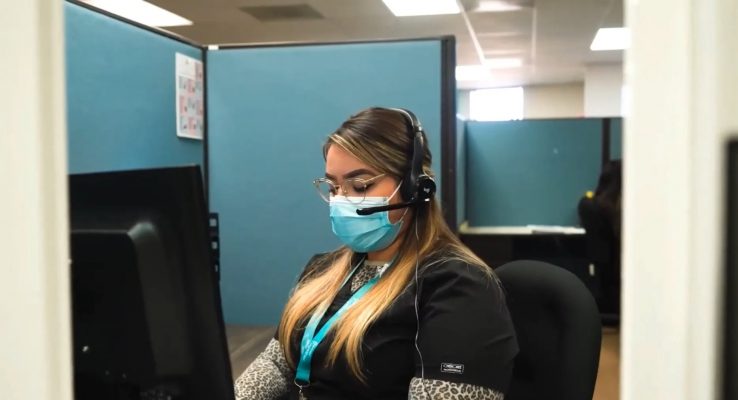After COVID-19 was declared a pandemic, White Memorial Community Health Center in Los Angeles was among those scrambling to convert to telephone visits with patients almost overnight.
Many safety net organizations favor telephone calls with patients, especially because their clientele tend to lack smartphones and broadband. But White Memorial had a pressing reason for expanding to video calls. “For pediatricians, it was a no-brainer that talking to a child over the phone isn’t ideal – they need to see the kid,” recalled Grace Floutsis, MD, White Memorial‘s chief medical officer. Although some adult providers prefer telephone visits, she noted, “the pediatric providers almost entirely want video visits. Two-thirds of our telehealth visits are now video” — a move that may give the health center a financial advantage this spring, when California is expected to change its policies to reimburse telephone calls at a much lower rate than either in-person or video visits.
Floutsis was just one of the many presenters during a recent webinar on how to roll out video telehealth, hosted by the Connected Care Accelerator, a CCI program in partnership with the California Health Care Foundation. Learn how health care safety net organizations are expanding video visits, both to offer their patients more choices and to avoid a potentially serious financial hit.
Jump to:
0:00 — Leading the Charge
Leaders from West County Health Centers and White Memorial Community Health Center discuss why they made video visits a priority for their organizations, explain how they supported their teams in that journey, and share some practical advice.
“Virtual behavioral health visits are just a no-brainer for our teens who are having such a hard time during this pandemic, especially here in Boyle Heights,” said Floutsis. “We’re seeing a lot of grief and [severe stress] that go along with being quarantined and the financial difficulties their families are facing. And students who were able to hook up with us for video visits really liked that. We’ve also found video visits are really, really good for episodic pediatric care.”
23:55 — flipping a telephone visit to a video visit
When the pandemic started in March 2020, 8 percent of CommuniCare Health Centers’ visits were video. Today that number has soared to 32 percent. Learn about the organization’s multi-prong approach to expanding their video visits, particularly the scripts that staff are using to promote them. “Initially, there wasn’t a strong desire to use video — it’s just the exhaustion of having to transform workflows in the midst of a pandemic and then asking staff to do it again,” says Lynette Brady, director of health information systems. “But ultimately we were able to make the change.”
37:05 — demonstrating a video visit workflow
Neighborhood Healthcare of Southern California is working on an ambitious goal of converting 90 percent of his organization’s virtual visits to video by the end of March 2021. Among other things, that meant cutting holes in a front office wall and installing sliding glass windows between the rooms housing the physician and the office telehealth coordinator. That way, the two could work closely together all day: Opening the window to let the doctor to know a patient was ready, closing it for the consult, reopening it to talk about the best pharmacy to call in meds to, and so on. Watch Neighborhood walk you through its entire video visit process and scripts, from when a patient calls for an appointment to the visit to the provider to the follow-up with the medical assistant.
Neighborhood was one of 14 organizations in the United States to score a FCC grant for telehealth, which provides $129,000 in funds for the health center to offer broadband and WiFi services to its patients. “We’re pretty excited that we were selected and can extend this to our patients,” says COO Jeffrey Glenn.
52:05 — leveraging community volunteers as tech advocates
For a successful video visit, you need to understand patients’ digital literacy and often connect them with tech support. Hear how Petaluma Health Center, Alameda Health System, and North East Medical Services are using volunteer programs to help patients access video visit platforms, sign up for a patient portal, and even create email addresses.
Find this useful or interesting? We’re constantly sharing stuff like this. Sign up to receive our newsletter to stay in the loop.

